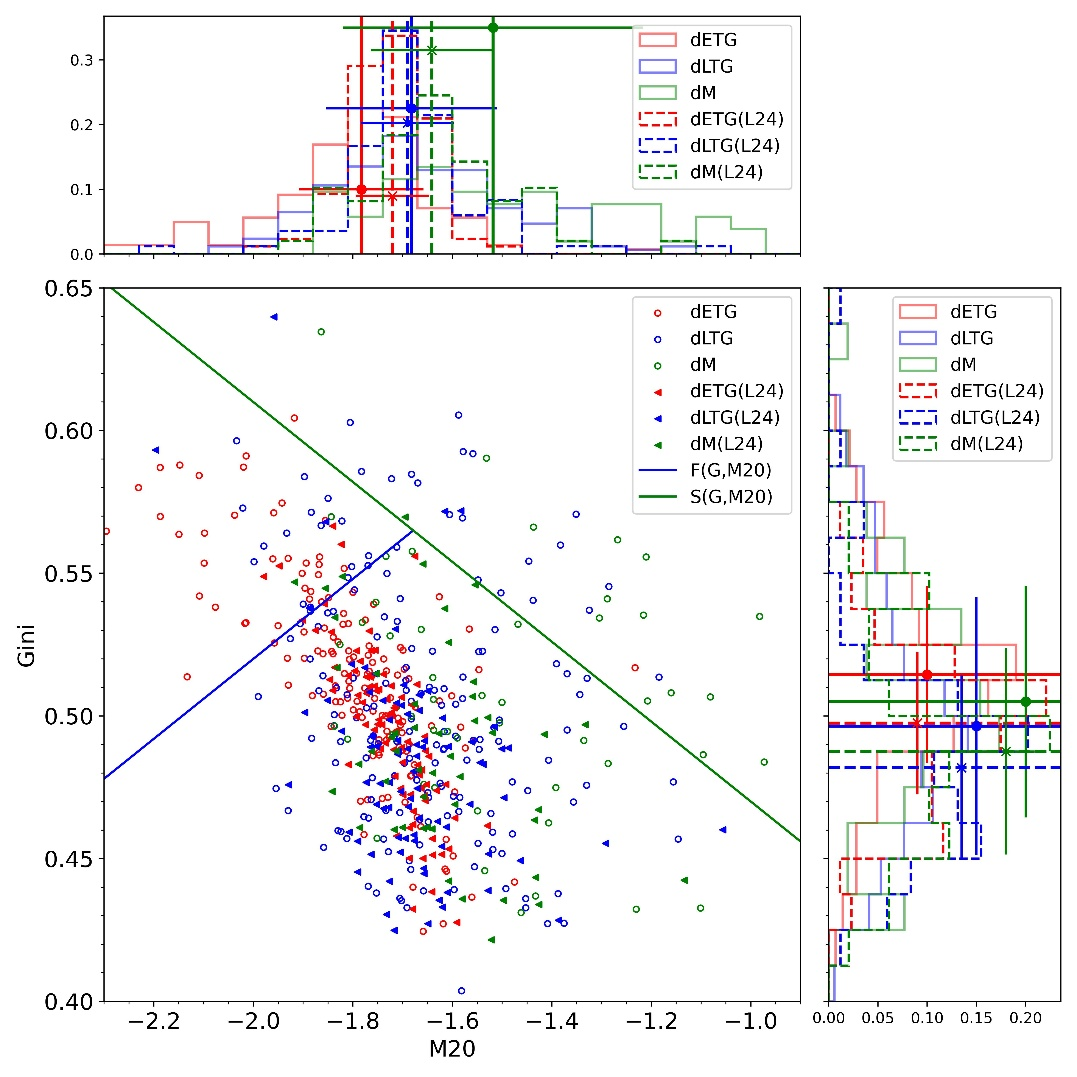Master's student TIAN Jie, and Professor ZHAO Yinghe with their collaborators from the Yunnan Observatories, have conducted a detailed study of the morphological characteristics of active galactic nucleus (AGN)-host dwarf galaxies, based on various bands and methods, including approximately 400 samples. They discovered that mergers/interactions are not the primary driver of AGN activity in dwarf galaxies. The research findings were recently published online in The Astrophysical Journal.
AGN-host galaxies exhibit many differences from normal galaxies due to the activities of their central black holes. The confusing mechanism underlying AGNs may depend on its level of activity. The most active quasars only come from merging galaxies or other external events, whereas less luminous AGNs may be sustained by internal secular procession. The morphology of a galaxy can give critical insights into its evolution and structural characteristics, which may also reveal the interaction of galaxies with their environments and internal perturbation, and thus has also been the subject of extensive study of AGN-host galaxies, especially for massive objects. However, there is currently a lack of detailed studies on the morphology of AGN host dwarf galaxies.
In this work, the researchers compiled a relatively large sample (∼400 members) of local AGN-host dwarf (M⋆≤109.5M⊙ and z<0.055) galaxies selected via various methods. They used the grz bands images from DESI DR10 and the Python package statmorph to measure nonparametric coefficients. They also carried out visual inspection with the assistance of deep learning to classify these galaxies into early-type galaxies (ETGs), late-type galaxies (LTGs), and mergers, and found that about 37%, 44%, and 13% of the total sample sources are ETGs, LTGs, and mergers, respectively. In comparison to normal dwarf galaxies, AGN-host dwarf galaxies have a higher probability to be LTGs, and a lower merger rate, indicating that mergers/interactions are not the primary driver of AGN activities. Among the subsamples selected with different methods, the Baldwin, Phillips & Terlevich (BPT) sample has the highest fraction of ETGs, the variability sample consists of the largest fraction of LTGs, and the mid-IR sample contains the most mergers.
This work is supported by the China Manned Space Project and the National Natural Science Foundation of China.

Figure 1, the distribution of nonparametric morphological parameters G vs M20 for AGN-host (open circles) and normal (solid triangles) dwarf galaxies. The blue and green lines correspond to F(G, M20) and S(G, M20), respectively. Distributions of parameters and median values (together with their associated uncertainties) are shown on the sides of the main panel. Here, “d” represents the dwarf galaxies, and “M” represents the mergers. Image by TIAN.
Contact:
TIAN Jie
Yunnan Observatories, CAS
E-mail: tianjie@ynao.ac.cn